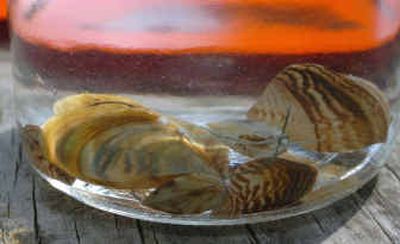Ecological invaders top most-unwanted list

EUGENE, Ore. – They are the proverbial ants at the picnic, the unwelcome guests who stay so long they start to smell suspiciously like fish.
Inclusion on Oregon’s list of the most-unwanted-species – the state’s downscale version of Mr. Blackwell’s annual worst-dressed list – is no small dishonor.
This year, feral swine, giant hogweed, gypsy moths, dead man’s fingers, toxic cyanobacteria, and imported fire ant all made the 100-species list, compiled by the Oregon Department of Agriculture.
Some of the plants, insects, fish, micro-organisms and other invaders have established a toehold in parts of the state, prompting efforts to eradicate them or slow their spread. Others have not shown up, and officials want to keep it that way.
“We have parts of the state we know are infested and other parts that aren’t, and we’d like to keep the clean parts protected as long as we can,” said Dan Hilburn, who heads the agriculture department’s plant division and is on the state Invasive Species Council, which issues the annual list.
The agency is trying to draw more attention to the growing problem of invasive species, which crowd out native plants and animals and can dramatically alter ecosystems.
Despite the long list of invaders, Oregon still has a fairly pristine natural environment compared to other states, Hilburn said.
“If you look at our forests and our rivers and the marine environment, it’s pretty healthy in most cases,” he said.
“It’s the way it was, and we’re lucky that way.”
Officials are especially on guard against the hated zebra mussel, which infests the Great Lakes, the Mississippi, Hudson and Ohio rivers and other Eastern waterways, and can migrate via boat trailers.
The freshwater molluscs cover boats and dams and clog underwater pipes, and they change the ecology of a lake or river by devouring food needed by native organisms.
Western Oregon could also see a rise in feral swine populations in the next few years. The mix of wild boar and escaped pig is already established in southwestern Oregon and easily could spread north, Hilburn said.
California now has hundreds of thousands of them, but the Oregon population is still small, probably fewer than 1,000, he said.
It’s too late to combat the spread of other invasive species, like Himalayan blackberry, Scotch broom and the New Zealand mud snail, so officials don’t bother listing them.
Instead, the list targets invasives that still can be beaten back.
“We want to focus people’s attention on the things that aren’t here,” Hilburn said.